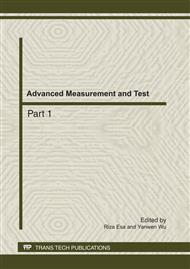p.1278
p.1283
p.1289
p.1293
p.1299
p.1305
p.1310
p.1316
p.1322
An Image Adaptive Watermarking Algorithm Based on Ridgelet Transform and Two-Dimensional Fuzzy Partition
Abstract:
An image adaptive watermarking algorithm based on ridgelet transform and two- dimensional(2-D) fuzzy partition classification is proposed. In order to obtain a sparse representation of straight edge singularity, the image is first partitioned into small pieces and the ridgelet transform is applied for each piece. After analyzing texture distribution in ridgelet coefficients of each piece, two feature vectors are selected to make up for the ‘wrap around’ effect for FRIT on representation of the image texture. Then the image is classifed into frat regions and texture regions by applying 2-D fuzzy partition classification algorithm with the two feature vectors prepocessed. An watermark sequence is embedded into texture regions with the embedding strength adaptively adjusted by ridgelet coefficients based on the feature of luminance masking and texture masking. Experimental results prove robustness and transparency of the proposed watermarking scheme.
Info:
Periodical:
Pages:
1299-1304
Citation:
Online since:
July 2011
Authors:
Price:
Сopyright:
© 2011 Trans Tech Publications Ltd. All Rights Reserved
Share:
Citation:


